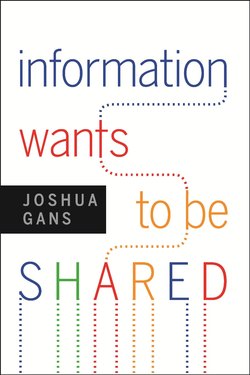Читать книгу Information Wants to Be Shared - Joshua Gans - Страница 10
Copying and Pricing
ОглавлениеThere is another set of predictions inspired by the Brand quote that more strongly suggests a downward movement in the price of information. Two effects follow from the adoption of digital technology in the realm of information. First, the technology allows people to more easily access and use information. Consequently, information that is available is more valuable. Second, that same technology makes it easy to circumvent the constraints that the suppliers of information use to keep information from you that you did not pay for (“piracy”). As a result, traditional purveyors of information should be able to profit from the new technology but, instead, find that their business models are threatened.
This dire scenario is best illustrated by the music industry, the poster child for the effects of piracy. Music was one of the first products digitized for mass consumption. Technological change made compact discs burnable and then redundant, leaving music in its digital form, disembodied from a means of carrying it physically. Consequently, on a number of dimensions, seemingly all at once, music could be easily copied. And so it was.
The desire to copy music has always existed. [3] Recordable cassette tapes were a threat to vinyl albums. I remember, as a ten-year-old, spending countless hours listening to the radio with two fingers ready to press “play and record” simultaneously on our family’s cassette deck so as to capture a desired song. (Yes, I do remember what songs, and, no, I’m not telling.) I did this because I couldn’t afford to purchase music (at least not often) and happily sacrificed time and quality to free it from broadcast radio. The current technologies for doing the same thing were a dream for those of my generation, but by the time they rolled around, I was too busy and comparatively too rich to live the fantasy.
From this perspective, digitization should have wiped out the music industry. A decade ago, many predicted it would. Compact discs and physical music stores have pretty much disappeared. Even in the absence of piracy, this likely would have happened, as downloadable music was even more efficient to distribute and more valuable to consumers than CDs. Of course, consumers were well aware of this and took matters into their own hands.
This is not the place to rehash the missteps of the music industry (both in its own digital ventures and in disproportionate legal responses to consumers), which, let’s face it, was well aware change was coming but it wasn’t sure where the competition was. A CD in 2000 sold for around $12. Given that a consumer’s purchases were typically driven by around four songs on the album, this would suggest a single song price of around $3. But a $3 single would have competed with the CD. It took Steve Jobs to convince the music industry that it was not competing with the $12 CD but rather with “free,” which suggested a much lower price point (as it turned out, $0.99). Moreover, the actual purchase had to be transactionally easier than illegal downloading. As learning how to download stuff illegally took some investment on the part of consumers (and risked infecting your PC with a nasty virus), a simple alternative (iTunes) convinced many consumers to not make that investment.
In the end, the music industry worked out—probably quicker than it would have liked—how to price music when the costs of distribution had fallen to zero. While revenue has fallen, the long-term outlook for profits is no longer their complete disappearance. Indeed, some evidence suggests that artists have not curtailed their creative activities at all. [4] What did change is the way in which music is sold: the market has moved away from the album as a generator of sales to the single.
Now, in fact, music publishers are no longer compelled to offer singles. Instead, they have the option to sell only albums, although they often choose to offer singles as well. Moreover, the singles on an album no longer have one price, but range from $0.99 upward, depending on demand factors. [5] This suggests that what drove the bundling of songs into albums previously was that it did not cost much more to produce and distribute an album CD than a single CD. This, alongside the fact that different consumers might desire a different subset of songs, led stores to shy away from wanting to stock singles. [6] Digital distribution changed the inventory problem and, with it, the returns to pure bundling. To be sure, albums cost less than the sum of singles, but, overall, consumers have more options to buy less if they want.
